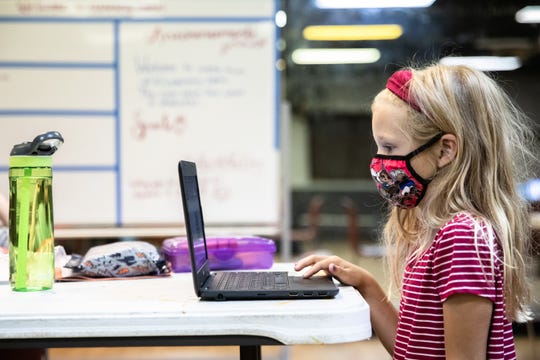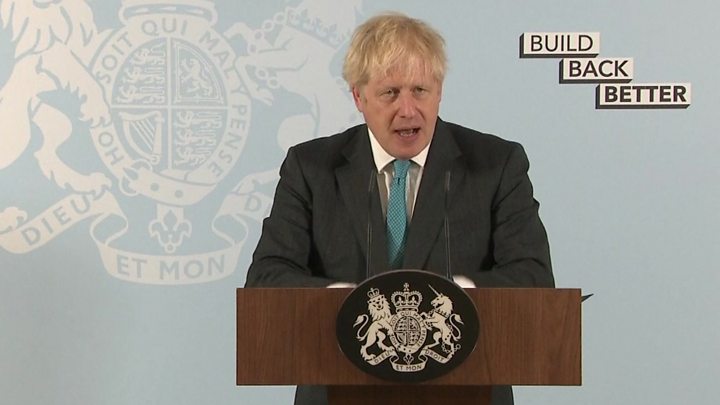Greenville County is South Carolina’s lone beneficiary of county-level federal CARES Act funding — a flexible pot of $91 million — to be given out by the end of the year.
The two biggest recipients so far have been $2 million for First Steps to create and support child care programs for students who don’t have the choice of going to school every day, and $1.3 million for the Bon Secours Wellness Arena, for coronavirus adaptations.
The $91 million is, for now, divided into two pots: $75 million for small businesses and nonprofits and $16 million in grant funding for health, local governments and other areas.
The smaller pot, with larger maximums, has been more rapidly paid out, $11 million has been distributed. The larger pot has only paid out $3 million, the maximums are $10,000.
First Steps, The Well receive millions
The biggest part of the $2 million sent to First Steps – $775,000 – went for scholarships so students could go to daycare centers and other places on days they are on distance learning, said Derek Lewis, executive director of Greenville’s First Steps program and a Greenville County School District board member.
The other money was used to help reprogram daycare centers, which often didn’t have experience dealing with older children and if they did it was only for a few hours rather than a full day, Lewis said.
More: Millions in unused CARES Act funds remain up for grabs in Greenville County
The interest in the scholarships has been so high that money not spent elsewhere from the $2 million will likely be reprogrammed into additional scholarships, he said.
The YMCA of Greenville took part in the training of child care centers, using the coronavirus protocols it fleshed out during summer camps.
It may have been the largest transformation in child care, in the shortest amount of time, in a generation or more, Lewis said.
First Steps worked with more than 100 daycare centers. They expect to have gotten enough centers on board to be handling 5,000 students by Labor Day and thousands more in the following weeks.
 Buy Photo
Buy Photo
Norah Stratton, 7, works on a laptop at the Eastside Family YMCA in Taylors, Monday, August 31, 2020. (Photo: MATT BURKHARTT/Staff)
It hasn’t been easy. Centers that could handle 50 to 60 children can now only handle 15 to 20.
“The same reservations of school districts are the same reservations that the YMCA has, that the center near you has,” Lewis said.
The other major recipient of the money was the Bon Secours Wellness Arena.
It will be using the money to make touchless technology upgrades including for weapons searches, tickets and for much of the concession payments, said Beth Paul, arena general manager.
The arena received approval this week from the state Department of Commerce for reopening, Paul told The News. She said the target is November or December.
Without getting the CARES funding, the upgrades would not have been possible and approval to open may not have happened without the technology upgrades, Paul said.
Tracking the money
The federal money is being tracked by the county. Click here for the full lists and for applications, which are open to businesses and nonprofits that are on property tax rolls in Greenville County.
Almost everyone who applies and meets the criteria, for both pots of money, has received some.
Only one application for the more flexible $16 million pot of money has been denied, said Bob Mihalic, governmental affairs coordinator for Greenville County.
Other grant funding recipients include:
- Greenville city – $693,728
- Phoenix Center – $588,220
- PASO – $229K
- Senior Action – $220K
- Other cities – $220,000
- Greenville County first responder testing – $151,795
Accountability measures
Both parts of the CARES Act money – the $75 million and $16 million pots – require receipts or something similar before the money can be paid, Mihalic said.
Businesses filing for up to $10,000 in reimbursement must show that the money has already been spent.
But entities getting money out of the $16 million pot can, in a few cases at least, get promises of money that will allow them to launch or operate a new program. The money is not released until it is spent but it does allow some future-looking programs to happen, while the $75 million pot does not allow businesses to propose future programs.
For the county, programs like this are seen as an economic necessity so parents can return to work, Mihalic said.
City government payments, totaling $929,259, are not based on population but on the requests cities send to the county.
So, while the city of Greenville received almost $700,000 city of Mauldin asked for and received $5,434.
Mauldin city officials did not respond to multiple phone messages asking about how they are spending and seeking these funds.
The money will continue to go out as fast and accurately as possible, Mihalic said.
The entire project is unprecedented, so if the county cannot spend the $75 million faster it would likely need to be reprogrammed to other uses, such as more money for health and childcare programs, he said.
Read or Share this story: https://www.greenvilleonline.com/story/news/2020/09/08/how-greenville-county-sc-spending-16-million-cares-act-funding/5632880002/



More Stories
Colorado K-12 enrollment drops, prompting funding, well-being concerns
Portland school psychologists speak out against cuts, reassignments
With wait lists for emergency child care, Virginia lawmakers could increase funding